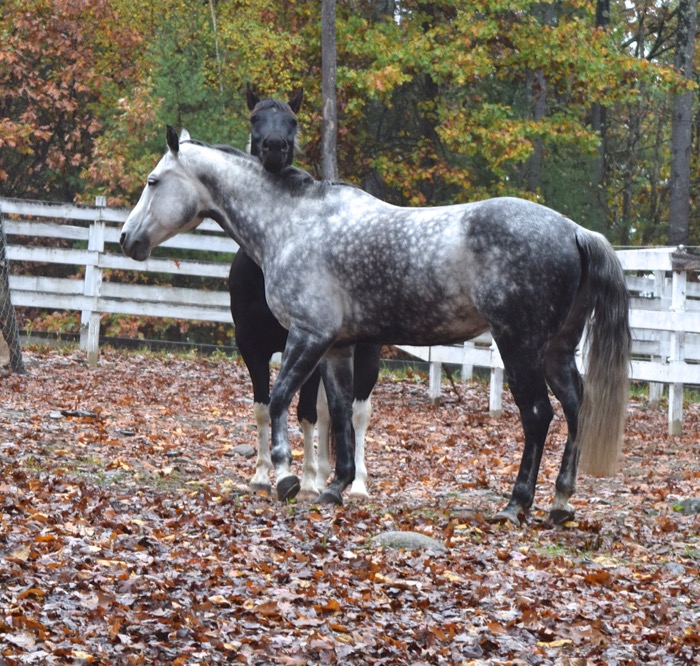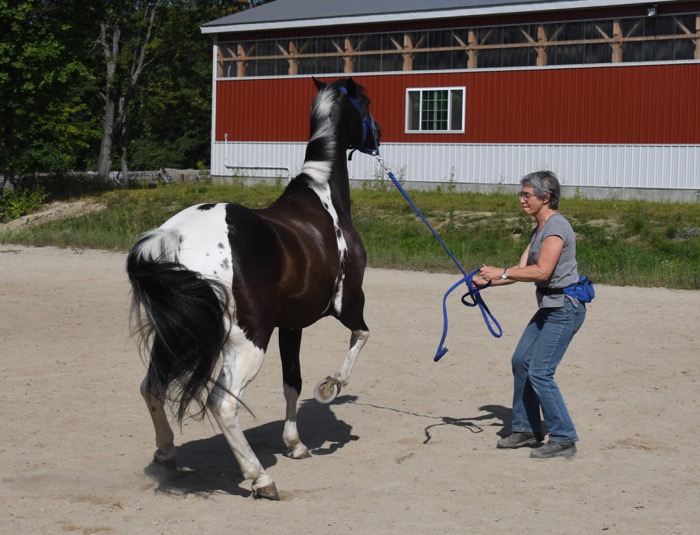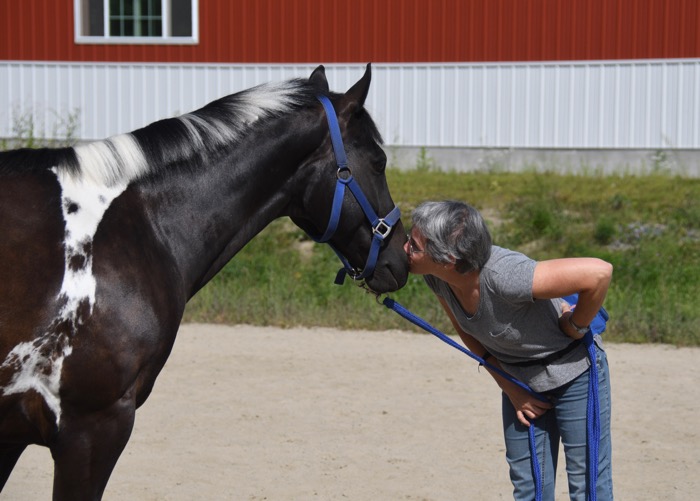Horses are complex, sentient, emotional, physical beings who communicate via body language. It’s usually quite subtle, but we keep these animals in situations that amplifies their interactions, which can cause some rather dramatic and potentially harmful behavior. Perhaps you know a mare that hogs both hay nets,

or one who decides that your horse is hers, and won’t let him near the gate (even when he wants to come!)

Maybe you ride a horse that tenses and makes faces when a horse he doesn’t like is behind him in the ring.

No doubt you’ve seen such behaviors, and many more, at your barn. They are at least annoying, and they make the care of the horses more difficult and time-consuming.
Some behaviors are outright dangerous, like when a horse decides that he will NOT lunge, and if you ask him, he turns into the Black Stallion and attacks. (Yes, that’s Tonka, and I’ll be writing about this tale in future posts.)

What most people have been taught is that the answer to such issues is for the person to dominate the horse and demand something labeled respect. Sometimes this gives you a compliant horse. But such training has downsides (which is fodder for another post, but see this for now). Sometimes it causes a horse to become more dangerous (I have such clients.) There is another approach to behavior issues.
For the last twenty-five years, I’ve been avidly following and studying the breakthroughs made in the field of animal ethology. (Ethology is the scientific and objective study of animal behaviour, usually with a focus on behaviour under natural conditions, and viewing behaviour as an evolutionarily adaptive trait.) This knowledge gives me the understanding of what the horse requires from the environment and from us, to be calm and cooperative (which, it turns out, is their preferred state if only we kept them in more natural surroundings). I’ve also been studying the science of how animals learn. These two fields are usually separate in academic institutions, but they’re finally melding, which from a practical, horse training perspective is wonderful, as together they provide the knowledge and tools needed to problem solve horse behavior issues.
I don’t have all of the answers, but I’m learning to ask the right questions. Those questions lead us to ways to make our interactions, whether on the ground or in the saddle, mutually beneficial for all involved. From a practical standpoint I still get to tell the horse what to do, but the horse participates knowing that in doing so, their needs will be met, too.

I will be giving three talks about horse behavior problem solving at the Equine Affaire in Springfield, Massachusetts on November 9 and 10. Here’s the descriptions of my talks. I’m working on my presentations now. If you have a specific behavior issue, let me know! Maybe I can work it into one of my talks. And let me know if you’re coming!


Was that a long time ago when you had trouble with Tonka on the lunge line?
Your talks look very interesting, I live too far away to go to them though.
He’s never been great at it, and when I tried to improve his behavior, I made it worse. Then, the only time I asked him to lunge was when he was hurting, and he let me know that he’d had it with the whole idea! So, I’ve gone back to the very beginning and waiting for relaxation when we’re in a lunging set up. It’s slow going, but we’re finally making true progress.